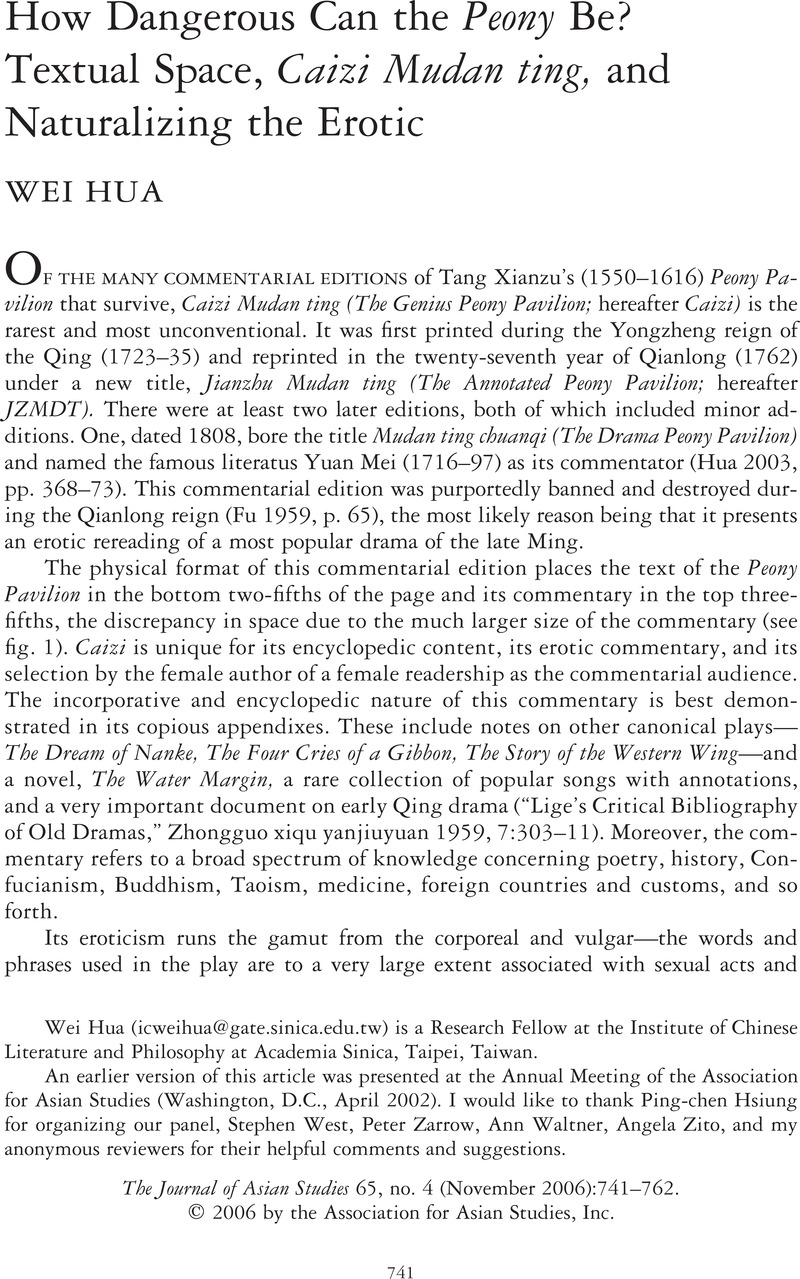Crossref Citations
This article has been cited by the following publications. This list is generated based on data provided by Crossref.
Chang, Kang-i Sun
and
Owen, Stephen
2010.
The Cambridge History of Chinese Literature.
Wei, Shang
2010.
The Cambridge History of Chinese Literature.
p.
245.
Chiem, Kristen
2017.
Painting, Peonies, and Ming Loyalism in Qing-Dynasty China, 1644–1795.
Archives of Asian Art,
Vol. 67,
Issue. 1,
p.
83.



 .
. 